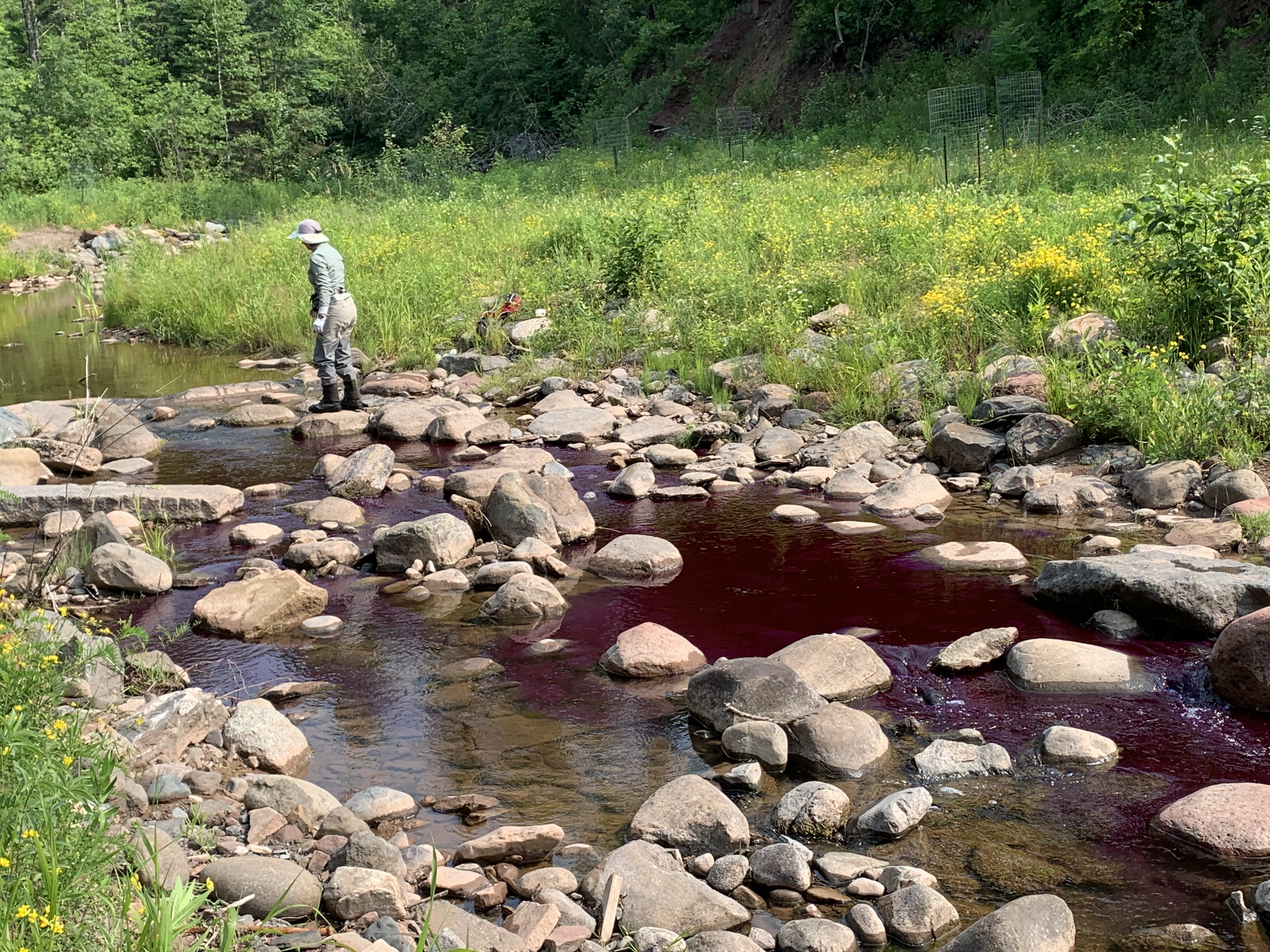Aesthetically, streams are lovely. There’s comfort in the sound of a babbling brook.
Streams also have important ecological roles that keep our environment functioning. They provide diverse habitats for a variety of species, move water through the landscape, and are natural filters that help maintain water quality. They naturally meander – bending and shifting across the land as they adjust to flow levels and erode soil and rock.
But intense storms and development can greatly alter stream channels and disrupt those natural processes and ecological functions. So, with better knowledge of streams and their important roles, many millions of dollars have been spent in Minnesota to undo some of the damage.
And in July, NRRI researchers used a new technique on one of those restored streams to better understand if restoration efforts change streams’ connection with groundwater inputs. Cool groundwater is particularly important in sensitive trout streams, especially as climate change warms stream water even more.
Six-Stream Makeover
Many streams across Minnesota have now been restored – re-meandered to improve fish habitat and reduce erosion by increasing vegetation on the banks. But have the improvements held over years? Do the fish populations reflect better habitat? Is the ground water exchange suitable to overcome surface water warming?

While millions of dollars are spent to do the physical restorations, much less money is set aside for post-restoration assessments, especially in-depth assessments. NRRI researchers selected six streams in northeastern Minnesota that were significantly realigned to study whether the restoration effort was successful.
“You can’t look at a stream a year after it’s been restored; everything is still disturbed,” said Valerie Brady, NRRI aquatic ecosystem ecologist. “And often there isn’t the funding to go in years later to assess success in detail. So that’s what we’re trying to do. Give the streams more time to recover and go in with an intensive look at how it changed, for better or worse.”
Brady is the lead principal investigator on these intensive stream restoration assessments to determine whether the fish habitat has improved and if there are enough aquatic invertebrates to feed the fish. They’re also monitoring water temperatures, checking water chemistry, studying how the stream processes nutrients, and assessing the physical stream features such as whether or not erosion is reduced.
“Basically, how successful are different improvement designs and will they stand up to future storm events,” said Brady.
Purple Power
Karen Gran, UMD fluvial geomorphologist, is a co-principal investigator, and she introduced the non-toxic dye technique to the assessment project after learning about it being used out west.
“We brought one of the experts in the technique onto the project, Ricardo Gonzalez-Pinzon, and he taught us how to run the tracer experiments and interpret the results,” Gran explained. “We were intrigued by the opportunity to get more robust information on surface water-groundwater exchange and wanted to try it out.”
Brad Evraets, a graduate student in the Water Resources Sciences program at UMD, learned how to do this dye technique from Gonzalez-Pinzon and is teaching Brady’s crew.

On a July morning, they mixed the deep purple dye with stream water in five-gallon buckets and then poured it in. Downstream, researchers waited to document if the purple flow turned red indicating that the water is mixing with low-oxygen below-ground water sources. These samples will be analyzed in the lab to determine the precise amount of mixing. Unrestored, or natural, stream sections are also part of the study for comparison.
“Stream restoration is very labor intensive and complicated,” said Brady. “Duluth has 16 designated trout streams and none are simple systems.”
Yet, the goal is to return the streams, as closely as possible, to the healthy, meandering, babbling brooks they once were, full of well-fed trout.
PHOTO TOP: Brad Evraets, UMD graduate student, pours non-toxic dye into Mission Creek for the tracer experiment as project lead, Valerie Brady, watches.
